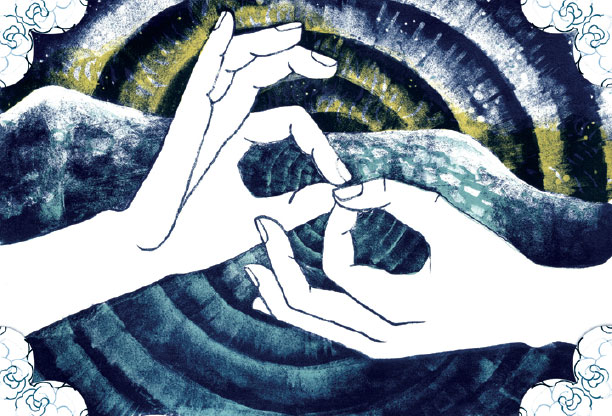
This month Insight Journal offers three more presentations from BCBS’ Spring 2016 Dharma and Arts Symposium (earlier presentations are available in last month’s issue).
Art as a Support for and Instrument of Buddhist Practice
By way of examining historical and contemporary examples of Buddhist art-making, each of this month’s three presentations engages with the question of the relationship between imagination, artistic expression and dharma practice.
David McMahon’s “The Buddhist Imagination” explores visionary Mahayana literature as examples of a Buddhist understanding of imagination as a tool for understanding along the path. Rather than prioritizing notions of “things as they are” as most Early Buddhist philosophy seems to do, McMahon reads these works as pointing to the necessity of “imagin[ing] our way into truths that are not immediately apparent”. With the emergence of writing, he points out, arose the possibility of fantastic literary illustration, such as that in the Gandavyuha Sutra, whose elaborate imagery depicts a world “deeper and richer than our usual state of mind allows us to see”.
William Edelglass’ presentation on “Historical and Textual Contexts for Dharma and Art” posits that “images can give us as much access to the truth as Buddhadharma can”. Beginning with a discussion of the bifurcated way artistic forms and Buddhist practice have traditionally been perceived in other cultures, he moves on to discuss the role of art in Tibet as a support for Vajrayana practice. Situating such forms as Thangka painting in the context of practice and distinguishing them from Western Kantian constructs that privilege notions of artistic originality and aesthetic genius, Edelglass traces a lineage of great dharma teachers who were also artists, and offers up a counter-reading in which art forms “achieve a union of this world and the world of the awakened mind that is imaginative union”.
Finally, Julie Püttgen offers up a more personal examination of these same questions in an exploration of her own unfolding art practice as an answer to the question “Why Does Expression Matter?”. Using multiple examples of her artistic installations, paintings, prints and other works, Püttgen’s presentation offers up a multi-faceted answer to the question. Through presentation and story-telling she examines artistic expression as a reminder of real and embodied presence of the world, as integrally related to embodiment, as an exploration of the ways in which our attention can be drawn, and ultimately as a form of co-created participation.